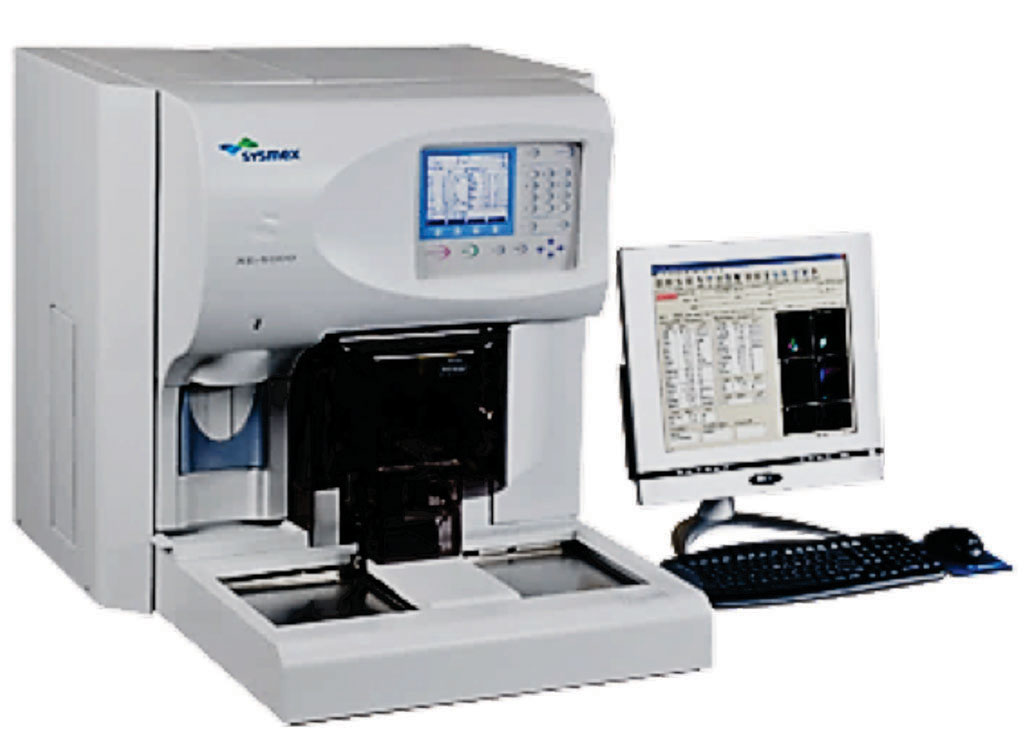Plasma NT-ProBNP Levels Predict Severity of Enterovirus-71 Infection
By LabMedica International staff writers
Posted on 08 Dec 2016
Hand, foot, and mouth disease (HFMD) is caused by a variety of human enteroviruses, mainly by enterovirus 71 (EV71) and coxsackievirus A16 (CA16), and is characterized by fever and vesicular exanthema on the hands, feet, and mouth.Posted on 08 Dec 2016
Brain-type natriuretic peptide (BNP) and N-terminal pro-B-type natriuretic peptide (NT-proBNP) are released in equimolar amounts from the myocardium. Their levels increase in response to hemodynamic stress, and they have an established role in cardiovascular (vasodilation) and renal (natriuresis) physiology, conferring protection against fluid overload and hypertension.

Image: The XE-2100 automated hematological parameters analyzer (Photo courtesy of Sysmex).
Scientists at the Hunan Children's Hospital (Changsha, China) enrolled between January 2012 and December 2013, 282 patients from pediatric intensive care unit patients with HFMD, 183 (64.89%) were male and the median age of the cohort was 21 months. Cases were recorded as having severe HFMD if they were found to have the more serious complications including encephalitis, meningitis, acute flaccid paralysis, and cardiorespiratory failure, or died.
Venous blood sample for the detection of NT-proBNP was collected during the first hour of hospital admission and was stored immediately at −70 °C. The samples were centrifuged at 3,000 rpm for 20 minutes and analyzed using an electrochemiluminescence immunoassay (Elecsys NT-proBNP; bioMérieux, Lyons, France). The clinical caregivers were blinded to the NT-proBNP values in order to avoid changes to the clinical interventions based on the results. The red blood cell count (RBC), hemoglobin level (Hb), white blood cell (WBC) count, and neutrophil count (Neu) were determined using a Sysmex XE-2100 Automated Hematological Parameters Analyzer (Sysmex Corporation, Kobe, Japan).
The scientists found that NT-proBNP levels were significantly higher in patients with elevated blood glucose of greater than 7.8 mmol/L and increased white blood cell counts of greater than 14 × 109/L. HFMD patients who had no complications had significantly lower NT-proBNP values than patients who died or had complications. The team was able to discriminate between patients with and without brainstem encephalitis, pulmonary edema, pulmonary hemorrhage, circulatory failure, and death, respectively, using NT-proBNP. An NT-proBNP cut-off value of equal to or greater than 1,300 pg/mL demonstrated a high sensitivity of 85% and specificity of 93.5% for predicting death in critical HFMD patients. Children with severe EV71-associated HFMD and NT-proBNP measurements of greater than 1,300 pg/mL had significantly worse overall survival compared to those with levels less than 1,300 pg/mL.
The authors concluded that with the WBC count and blood glucose level, the NT-proBNP level can reflect the severity of EV71-associated HFMD, and NT-proBNP appears to be a better biomarker than the WBC count or hyperglycemia to discriminate severe HFMD patients with or without severe complications. NT-proBNP levels may be able to predict complications or mortality in children with severe EV71-associated HFMD disease in the intensive care unit. The study was published on November 3, 2016, in the International Journal of Infectious Diseases.
Related Links:
Hunan Children's Hospital
bioMérieux
Sysmex













